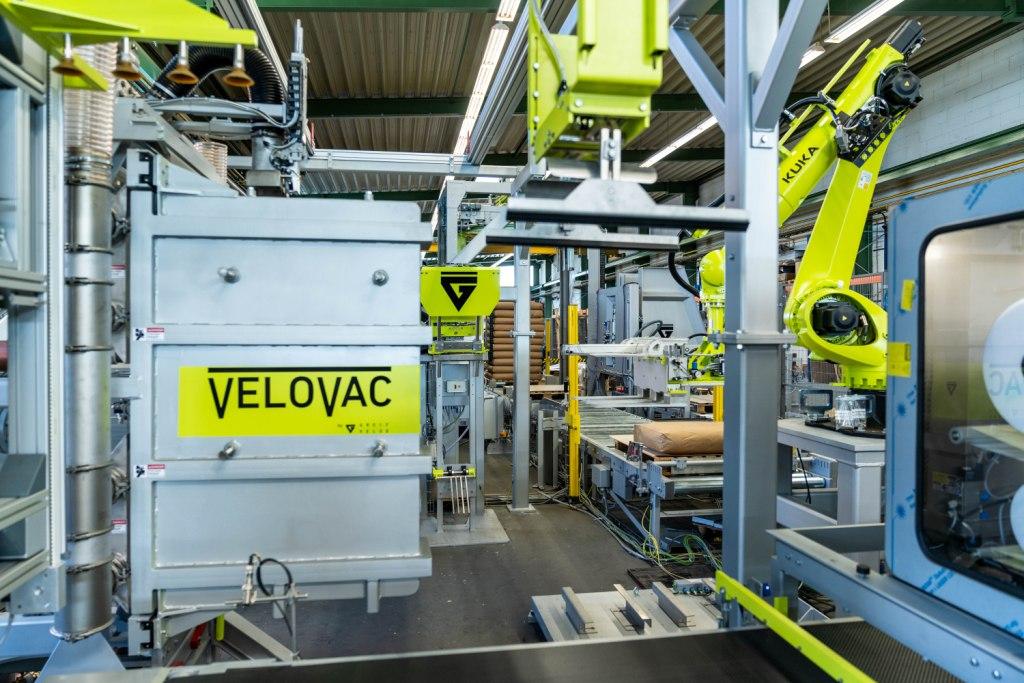27.02.2023
Dust-free bagging of carbon black
Vacuum technology makes working with ultralight powders clean and efficient for lithium-ion battery manufacturers
Carbon black is required to manufacture both primary and secondary batteries. Ultra-fine, lightweight and potentially toxic, carbon black has been extremely challenging to bag, resulting in high logistics and quality costs for manufacturers.
The vacuum technology from packaging machine manufacturer Greif-Velox solves these problems, ensuring that this valuable raw material can be made available to battery manufacturers in more significant quantities -- efficiently and dust-free.
The future belongs to electromobility
According to the Fraunhofer Institute, electric vehicles are expected to comprise 75 percent of the total vehicle market by 2030. This is causing a sharp increase in global demand for one of the key technologies of e-mobility: lithium-ion batteries.
In addition to lithium, cobalt, and graphite, there is another essential substance to battery production: conductive carbon black. As an additive in the cathode, carbon black forms a conductive network that ensures the battery functions.
As demand for electric cars and efficient energy storage systems increases, so too does the demand for carbon black and its high-quality sub-forms, lamp black and acetylene black.
Difficulties of properly handling conductive carbon black
As an ultra-fine powder with a grain diameter of 60 to 110 nanometers, as well as a low bulk density and high air-holding capacity, bagging and packaging conductive carbon black for transport is a huge challenge for manufacturers.
In conventional processes, dust soiling results in high cleaning costs and the emissions put employee health at risk. Bulky bags with air pockets also lead to high logistics and transport costs.
Bagging in a completely sealed vacuum chamber
The engineers at Greif-Velox responded to these problems by developing the VeloVac vacuum process. Unlike conventional processes, VeloVac works without vacuum rollers, so users do not have to invest time or money in maintaining and calibrating these system components.
Bags can be filled directly without the time-consuming start-up and build-up of a filter cake because the bagging of ultralight materials occurs in a completely sealed vacuum chamber. In this chamber, a negative atmospheric pressure is generated, which sucks the product into a valve bag or a FIBC.
Thus, during bagging, no particles reach the outside - a unique feature to the VeloVac.
Dust-free bagging creates a safer work environment
Using conventional methods, bagging lightweight materials such as carbon black is a dirty business. When filled with pump packers, bags are then mechanically compacted with a press, with about 1 percent of bags leaking and bursting due to poor workmanship. The consequences are higher costs and unplanned machine downtime and clean up time; in addition, there is a risk of endangering employees with harmful dust.
When bagging in the closed vacuum chamber, employees are protected from dust, product loss is prevented, and the plant is not contaminated. In addition, automation ensures an improvement in working conditions. While conventional bagging processes for carbon black require employees to carefully remove the bags while wearing full-body protective suits, a robot can now perform this work with less risk and in less time.
High-purity product essential for LiB production
For added safety, dust detectors inside the chamber notify the operator if a bag leaks during the bagging process and stops the filling process before the bag bursts. If particles get outside the container during the filling process, they are picked up by the suction device and returned to the product flow without loss. In addition, a cut-off device in the system automatically separates valve overhangs that may still have product residue on them so that neither the bag nor the pallet are contaminated. An ultrasonic welding unit ensures a tear-resistant weld, which also increases transport safety.
All of these features result in a high-purity product, which is essential for battery production. This is because metallic impurities and moisture can lead to undesirable side reactions and negatively affect the performance and durability of the battery.
Reduction of transport costs and CO2 emissions
The vacuum process also results in the densification of the product during bagging. Conductive carbon black has a mass concentration of 30 grams per litre after production. When bagged in the vacuum chamber, it is compressed fourfold to 120 grams per litre.
This compaction results in uniformly shaped, easily stackable bags without trapped air, creating an even pallet stack. This prevents bags from slipping and being damaged during transport. Carbon black producers can reduce shipping volume by more than half by using vacuum technology, so less than half as many containers need to be used for transportation. Accordingly, the CO2 footprint during transport is also reduced.
Reduction of packaging material
The Greif-Velox development team has also responded to the higher demand for carbon black and the associated manufacturer requirement to be able to fill ultra-light powders into larger containers.
Using a vacuum process, the Greif-Velox VeloVac XL can now bag conductive carbon black in FIBCs in a dust-free, efficient way. This development has positive effects on storage and transport: while the capacity for carbon black in valve bags is 7.5 kilograms, an FIBC holds 200 to 230 kilograms – up to 66 times more. End users can process and empty larger bags faster, using up to 30 percent less packaging material.
Reduction of the CO2 footprint
The optimized filling and packaging process of carbon black using a vacuum process ensures that a high-quality material such as carbon black is made available to the end customer in more significant quantities faster, and in high-quality packaging. The process reduces the CO2 footprint for battery production and thus provides sustainable support for the electromobility revolution.

The vacuum chamber of the Greif-Velox VeloVac
« Back
|